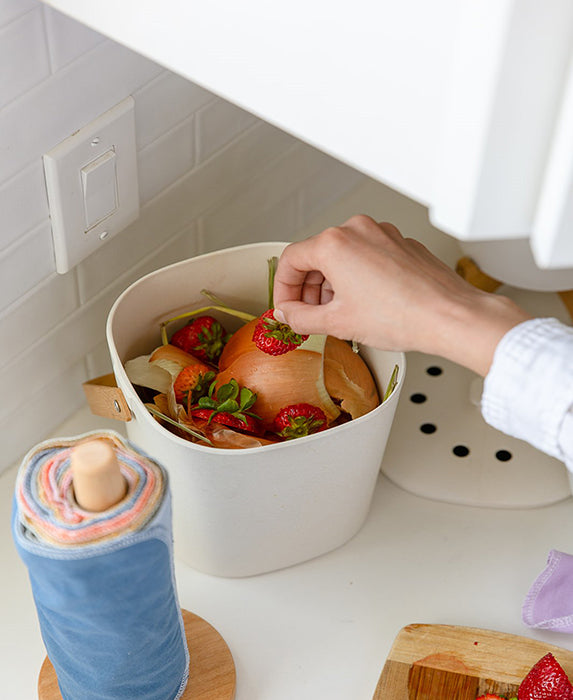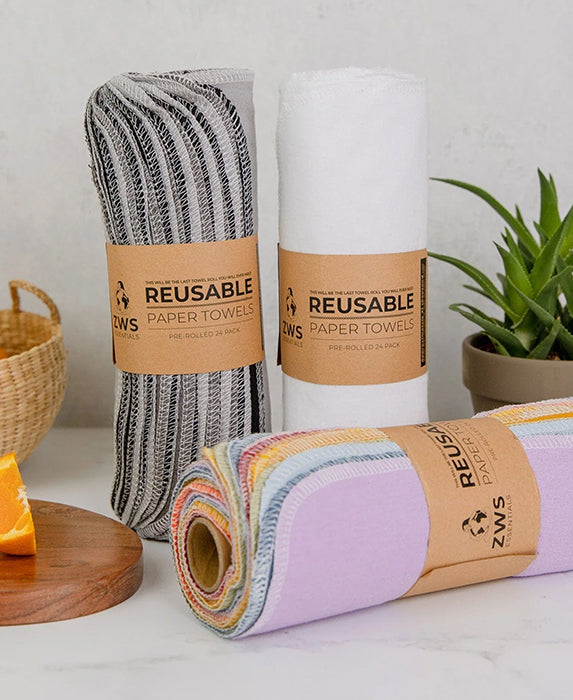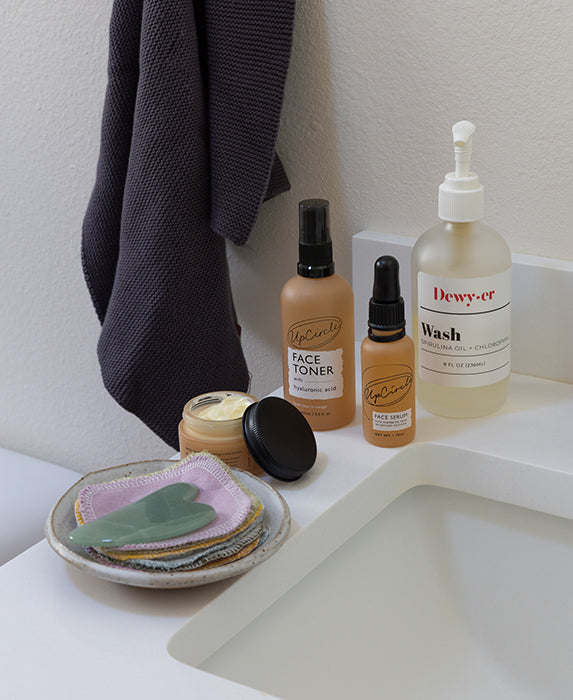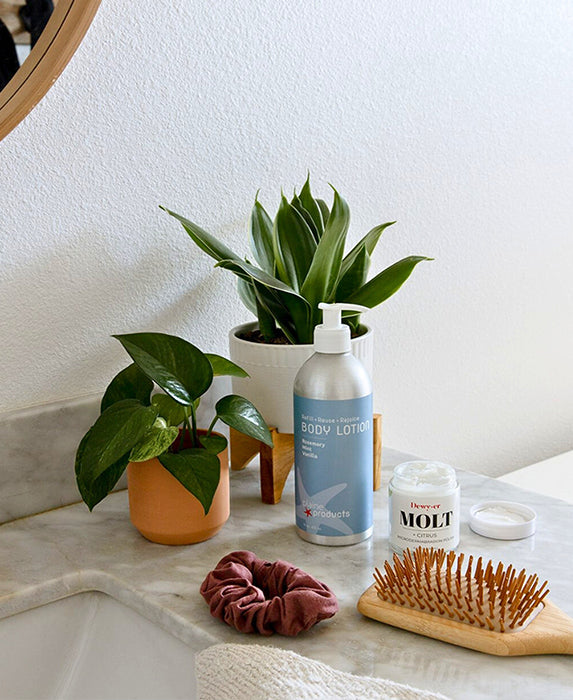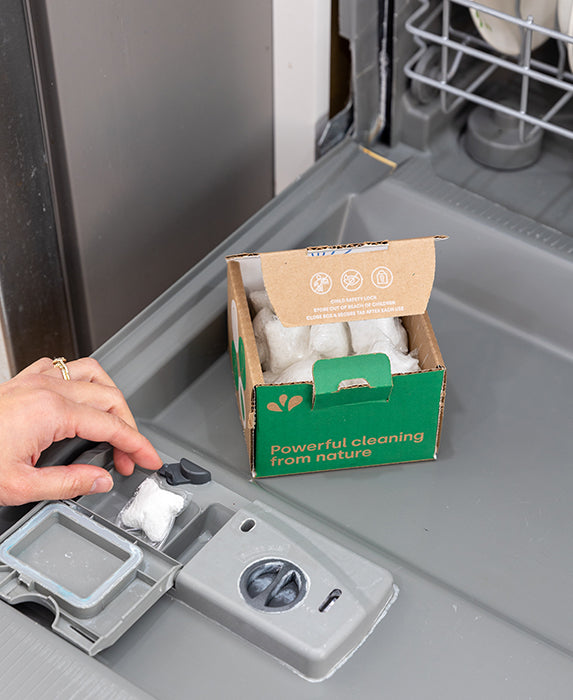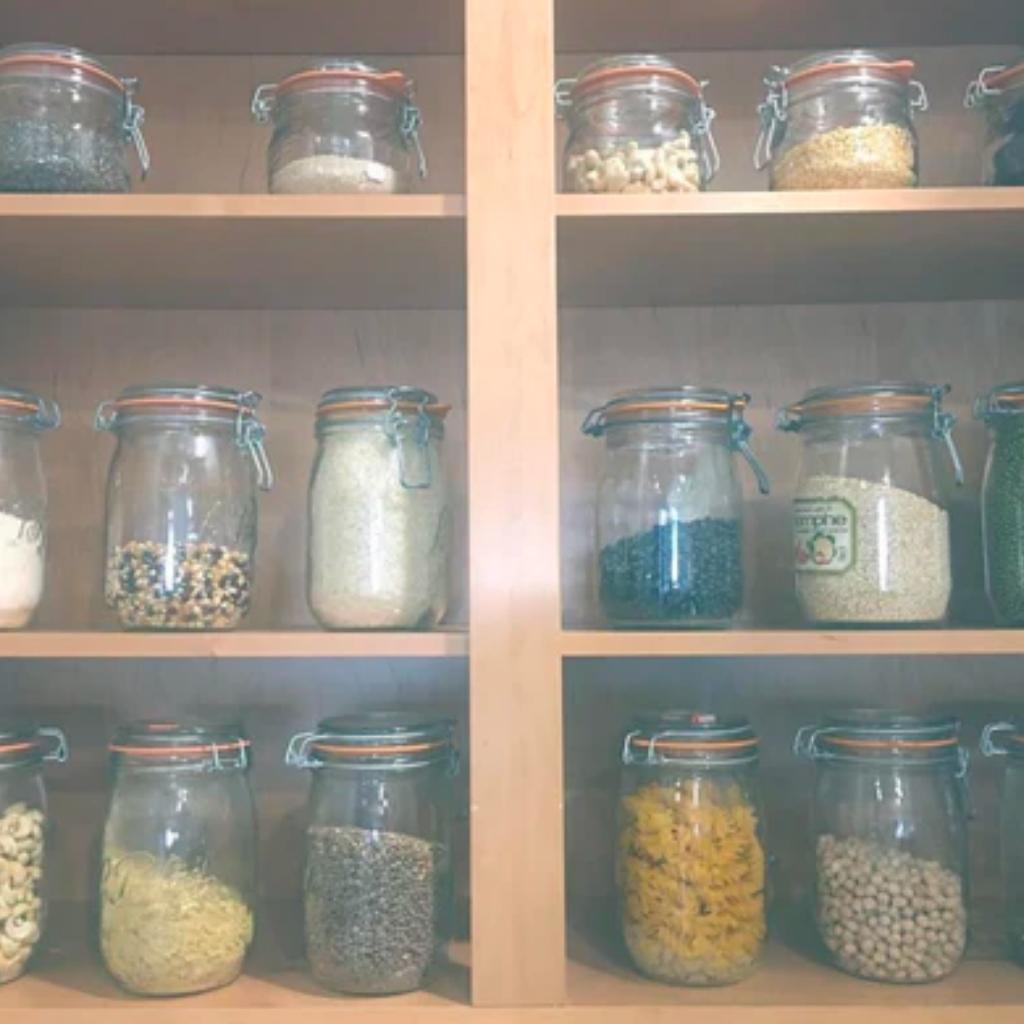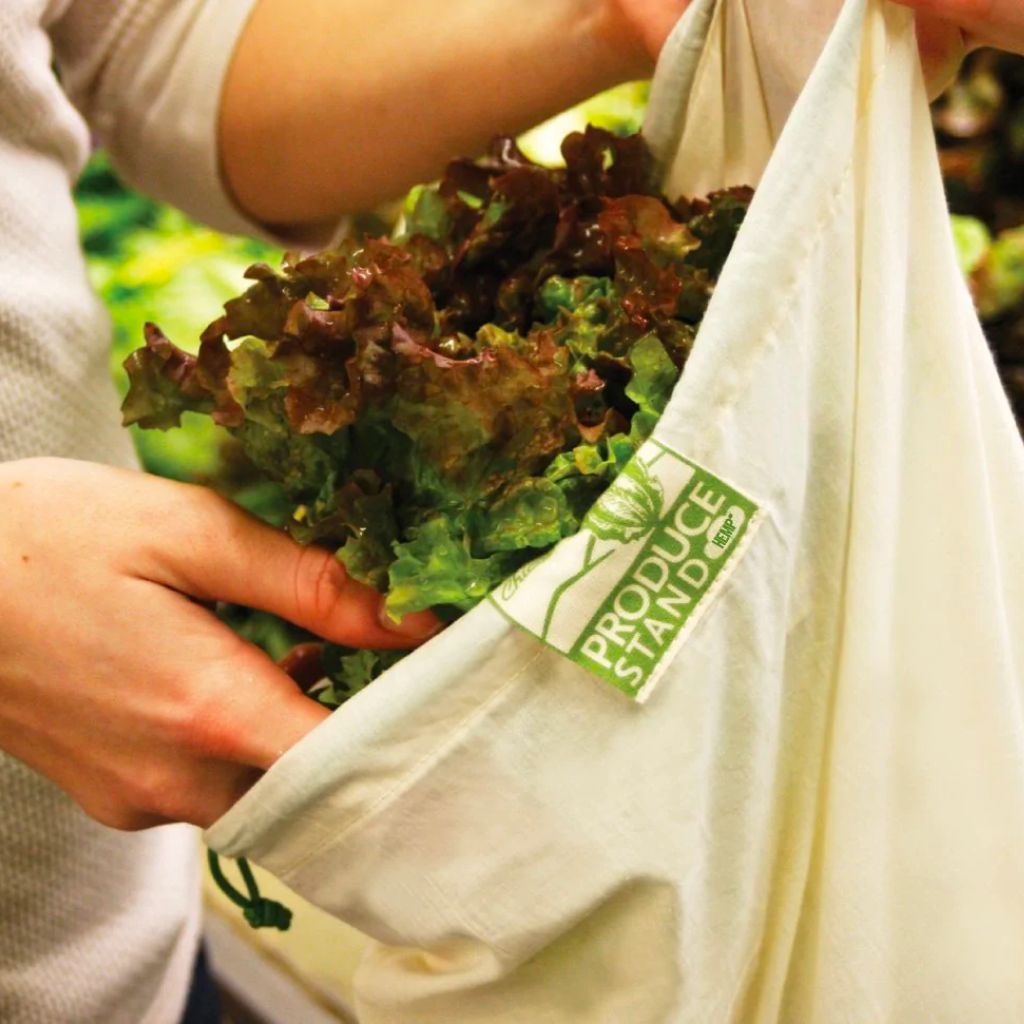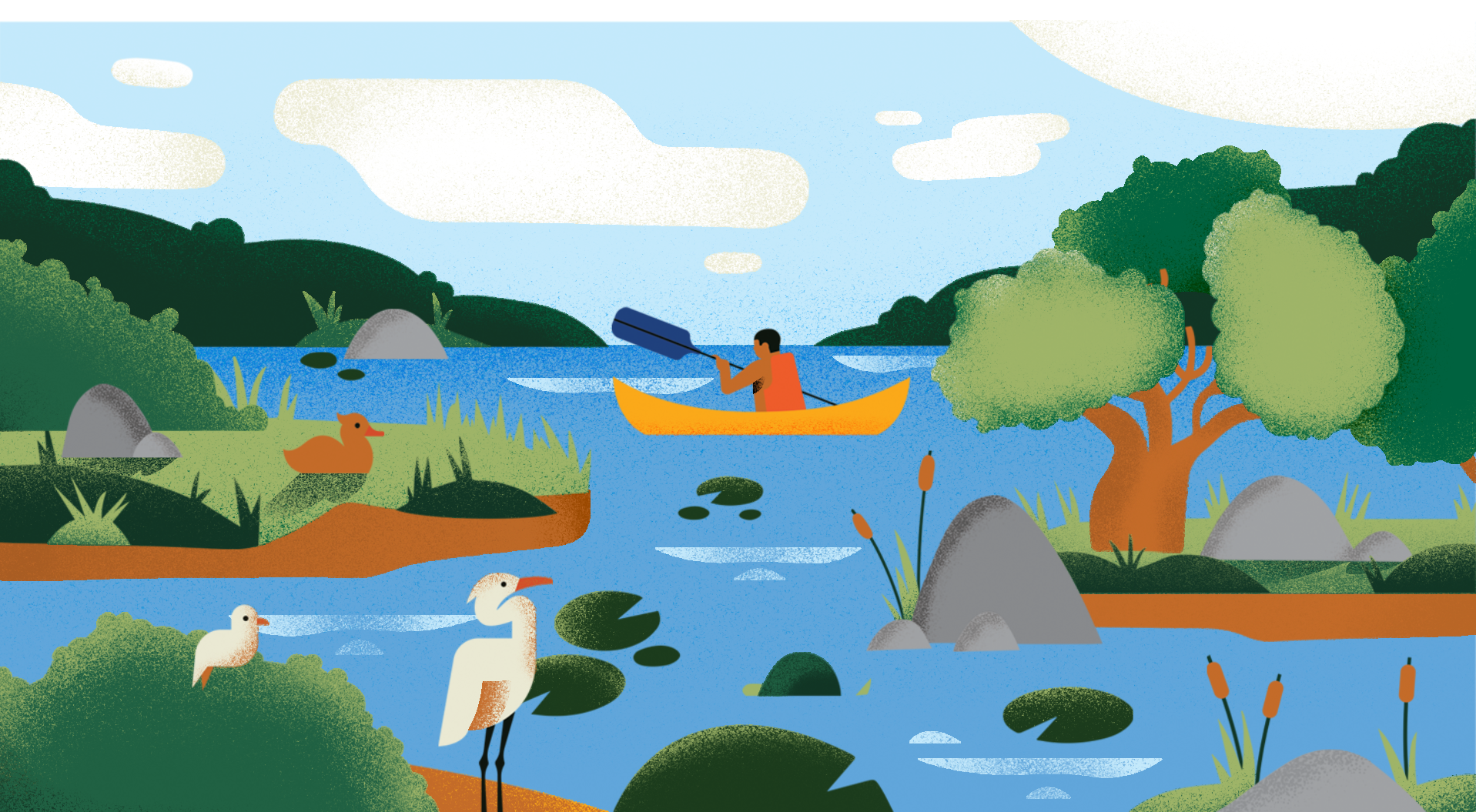
Over the month of March, we brought the world of zero waste to you–highlighting tips, tricks, and stories from inspirational zero wasters worldwide. From swapping single-use plastic for reusable alternatives, to taking on home composting, we saw our community buzz with excitement, sharing zero waste knowledge far and wide. But some questions came up again and again: how do I get started, can I still buy things, and does all of my trash need to fit in a mason jar? To tackle these questions head on, we brought the expert to you in our first ever EarthHero webinar with Andrea Sanders of Zero Waste Home (find her on Instagram @bezerowastegirl). We’ve transcribed our favorite bits below, or you can check out the entire hour interview here!
Ryan Lewis, founder + CEO of EarthHero: Welcome to our Webinar with Andrea Sanders from Be Zero, a zero waste legend. I’m founder and CEO of EarthHero, and today we’re just going to spend some time talking about zero waste. So welcome, Andrea.
Andrea Sanders, founder of Be Zero: Thank you so much for having me. I’m excited.
Ryan: So, before EarthHero was even started, I met with Andrea early on because we both live in Boulder, Colorado, and she was nice enough to have some coffee with me. From the very beginning it was so great to get Andrea’s perspective on this whole sustainability issue and how she’s approaching it. She has collected quite a following of people that she inspires around a zero waste lifestyle. So without further ado, I would love to start off by asking you, from your perspective, what does zero waste mean to you?
Andrea: Well, people can define that a lot of different ways, but when I look at it, I think of that term and what it’s referring to. And it’s referring to a type of economic infrastructure where we design things, whether it’s a chair or a couch or a computer or roller skates, we design things so that waste is not built-in. In order for that to happen, we have to have a whole infrastructure in place, you know, regulations and laws and infrastructures, and everyone has to be on board.
So zero waste is actually referring to a type of economic structure otherwise called like a circular economy. That’s what that term really means, but so we don’t live in a circular zero waste economy, it’s linear. And so what we’re trying to do…
Ryan: And by linear you mean, a product is made used, and then buried.
Andrea: Yeah, take, make and waste. That’s the real simple way to think of it. So, when we design things, we’re not designing it in order for it to circle back into our infrastructure, like how nature would work. Right? Since the zero waste lifestyle movement has become kind of popular, it’s sort of been redefined into more of an individual process, what can we do on an individual level to reduce our waste? When you look at it that way, I think of it as really as this navigation. When I hear ‘zero waste’, I think of the economic infrastructure that we want to move towards.

Ryan: …I think that really what you’re saying is there’s an infrastructure that we need to move towards that doesn’t quite exist yet, so there’s a gap in where we want to be and where we are.
So before we kind of dive into that, I’m curious, there’s a lot of concern and a sort of anxious curiosity around this whole situation we’re in with the current status of our planet and what’s happening day to day… even for people that aren’t designing their lives around this stuff, we’re hearing it almost daily now. So, what inspired you to start BeZero.org? What inspired you to dedicate your day to day life into promoting this message.
Andrea: So my background is Environmental Education. I grew up on the Gulf Coast of Florida and I started volunteering at a local marine research center when I was 14 and I pretty much did that up until I moved out of the house. I spent my early life teaching environmental education conservation, whether that was in the marine field or the zoological field. I also have a background in meditation, and I still do that, but I spent 10 years doing that.
One of the things I’ve learned when I was teaching, talking to the public about conservation, or trying to get people to build relationships with the environment is that there’s just not a lot of information… and we’re very disconnected. And so I saw this disconnection. It’s between ourselves and the world, the natural world, like the biosphere. It’s like we’re here and nature’s over there. It was this idea of trying to build relationships with the world around us.
I was teaching at a wildlife facility, teaching people about plastic bags and wildlife being entangled in them. I went home that night and did some research and found this blog called Zero Waste Home. Bea Johnson is kind of the founder of the zero waste lifestyle movement. She started this blog back in 2007, and it was basically her documenting her family’s journey in making less waste. All of their trash, for their two boys, her husband and herself, would fit in a mason jar for the whole year.
I saw this and I was like, whoa. This light switch went off for me. Everything that I was doing in environmental education already, and all the things I was trying to do personally, like thinking of myself as an environmentalist…I was like, wow. I never connected the things that I did personally, like my trash, or what I bought, or what I ate, to what I was doing every day. Teaching the public about saving the whales, or sea-grass beds, or whatever it was. So it was kind of like this “aha” moment for me and I was like, “Oh my gosh, this is all about really putting value back into the things that we use again.” Whether it’s stuff or people or resources… that’s what’s been missing.
I had never thought about it until I stumbled on her blog, and that started the evolution of Be Zero. It kind of meshed my two backgrounds together–meditation and environmental education.
Ryan: That’s fascinating, because really what you’re saying is living zero waste and living more sustainably in general is directly correlated to be more mindful in general. What are some of your bigger challenges living this way?
Andrea: I think it’s just about having an infrastructure that doesn’t really support the dreamy ideal that we all want to have. Maybe this is a weird analogy, but the people who were living in the late eighteenth, early nineteenth century that could see the onset of new technologies, but everyone was still using candle light and things like that. I still sometimes feel like I’m in that realm.
I’m bound by an infrastructure and different circumstances that don’t let me live exactly how I would think we should all be living. I’m not weaving my own clothes, or churning my own butter, or anything like that. I still utilize the platform that we all really have. I find it’s just trying to navigate
Ryan: So, sort of the gap between where you would want the world to be at this point, but compared to where it actually is. What are some of the things that you hear about that other people are having a hard time with?
Andrea: Yeah, I think it’s access. We’re kind of lucky
The most concerning thing with the people I talk to is “I don’t have these things near me.” You can go online to EarthHero and places like that to get access to stuff too, but I think in general, it’s just that our cities and our towns aren’t situated for less
I think it’s because our culture doesn’t think about waste. We don’t think about it as a problem, and so it can seem kind of odd. Some people think: “Why even bother? Why was I ever concerned? Why does it even matter?” So I think those are the kind of bigger hurdles: access and not having support around you, whether it’s family, friends or even your community.
Ryan: So, what do you say to people that have their personal values articulated really well? They want to take the
Andrea: I think what people should think about is that a lot of this idea of producing less waste, or putting more value into things, or taking ownership of things isn’t really new. It’s stuff that we did just a few generations ago. And so, if we’re talking especially to older generations, they lived in a world where there weren’t disposable things. A world where you bought stuff that lasted, and you took care of it. A lot of what I’m talking about isn’t so much about trash that you’re making, but about how much we’ve devalued things.
So, if you have a family member that doesn’t consider themselves green, or sustainable, then I usually come at it from a completely different angle and go right into that value. Don’t we want to value the things we own and take pride and ownership of where things come from? Really all of this is about resourcefulness and thriftiness and community.
That’s the kind of angle I encourage people to talk to others about if they’re misunderstanding things or don’t understand. In essence: why don’t we all want to value things more? Don’t we all want to value our communities more? Don’t we want to value the food we eat, the things we wear, and what we make, more? That usually helps people communicate these things a little bit better.
Ryan: It’s funny, I’ve noticed that once you learn this stuff and you start thinking this way, you can’t unlearn it. And once you learn these things, your actions change, and others start to take notice.

Andrea: I call it quiet activism. Those moments where you’re asking for no straw or you go to a party and just bring your own cup but you don’t say anything–you just kinda do it, right? And that’s the quiet activism, where it’s not like you’re slapping disposable cups out of people’s hands at a party or something, you’re just doing it and then people ask you about what you’re doing. Then once they ask you, you have this platform.
Curiosity leads to knowledge and inspiration, and it just ripples from there. I always think that’s such a great way to advocate for what you’re doing. Just do it confidently and be knowledgeable about it in the best way you can and people will start to be interested like, “oh, why are you doing that? I want to do it too”.
Ryan: So how do you buy stuff and live zero waste at the same time?
Andrea: We don’t live in a zero waste infrastructure, so trash is going to happen. There’s going to be things like, “oh, it has packaging” or “it has a little plastic tag.” When you’re trying to reduce or make less trash, it’s important to realize what the term ‘zero waste’ means and why you’re doing it in order to navigate through the culture.
As you’re navigating through a disposable culture, you have to remember that we have a linear infrastructure and just be OK with it. It’s not a perfect system. You’re going to have trash come into your life that has to go to a landfill because it can’t be recycled, and that’s OK. The idea behind it is that we’re just putting that value back. So if I’m shopping for things, my shopping is a lot different than it was like 10 years ago.
Ryan: What are some of those differences? Living in a modern culture, how do you approach this idea of needing a gift, whether it’s a necessity or a want? How is your approach different than someone that’s not living a zero waste lifestyle?
Andrea: What I do is think of the materials. If I’m buying clothes for example, I personally like linens and natural fibers, so I’ll look for materials before I buy something. Then look at how it’s packaged. I’m fine with things being packaged in some way if I can’t avoid it. If it’s a good product and I think that I’ll get use out of it; if it’s durable, reusable, or multifunctional, then I feel OK about buying it. Those are the things that I look for in a product.
It doesn’t have to have all of those things. I’m not so stringent and restrictive that if a product doesn’t meet all my requirements I won’t buy it, I just pay more attention. The next question to determine whether or not I buy something is, “do I need it?” If there’s something that brings me joy, I like it. Think about, “does it inspire me and make me happy?” You have to really think about that for yourself. Get out of the clutches of the “over-consumer” impulse and just be thoughtful about how you’re buying, keeping those qualities in mind.
Ryan: Do you find yourself spending less money? Because one the common misconceptions out there is that living sustainably, in general, is more expensive than not living sustainably. So how do you feel about that?
Andrea: I definitely spend a lot less. I’m not impulse buying like I used to. Now I feel like I spend less because there’s that pause before I buy, and when I do buy something, it’s something that I know I’m really trying to get the most use out of. I’m not saying that everything I buy I’m going to use for the rest of my life–I might use it for a year or two and then maybe sell it or something like that. For the most part, I consume far less than I used to, and that’s because I try to think about those things first.
Sometimes better things do cost a little bit more money, and so that’s the kind of thing where it’s not always going to be accessible to people. I also try to think about what happens when I let go of all the frivolous things that I was buying. For example, when it came to clothes, I would buy all kinds of fast fashion type stuff, like $3 shirts, $5 jeans, whatever. I realized that, if I totaled all my spending for that month on cheap clothing, I could have just bought one nice, adaptable, durable, lasting thing. We have to kind of rework our relationship to consumerism, and that honestly looks different for everybody.

Ryan: So the average American creates four and a half pounds of trash every day, which is fascinating to me. My guess is you’re creating a lot less than four and a half pounds of trash every day. Ts that really what a lot of this is about? What would you say the end goal is, actually?
Andrea: Honestly, there’s almost no end goal for me. It’s always a continuation. There’s always going to be evolution and things that are continuing. So for me, it’s like, I recognize I wasn’t putting value in the things I used, and now I’m putting more value into things I use, which naturally decreases the amount of waste that I make.
We don’t have a trash can in our whole home, we just have a jar that’s underneath our kitchen sink and then when that fills up we put it in a paper bag in our main city bin and we take out that once a year. It’s drastically a lot less waste, but that waste shows the limitations of a linear economy that we live in. I can’t get around that unless I completely give up, like, so much stuff.
I tell people that if we all made that little waste, that’s a big signal to
Ryan: You brought up a good point, which is when you buy stuff that is designed well you’re actually sending a signal to the companies that are doing it the right way to make more of that. It’s the old “voting with your dollar” cliché. To me, that’s sort of the economics behind this whole thing. Over time, with more people, that will create changes around the physical making of products and product design.
One of the questions I ask people, just because I like to geek out on this stuff, is if they feel like they live a sustainable lifestyle and why. And the number one response to that is, “well yeah, I recycle.” So, how does recycling fit into this and the circular economy?
Andrea: Yeah, so
Recycling is good, and I’m not saying everyone should just halt recycling, but we have to understand what exactly is happening, and understand that it is a business too. Especially in the U.S., recycling is complex. It’s resource intensive and it takes a lot
We also don’t have a whole lot of products accessible to us that are made from recycled products. So, if we’re not buying recycled products, then there is almost no point in recycling. We produce so many materials that recycling doesn’t even make a dent because we’re producing so much. It comes back to the idea that, sure, something might be recyclable, but wouldn’t it be better to have something I can use over and over and over again? In the end, recycling is something that is nice, but we can’t rely on it like that’s going to save us or something.
Ryan: There’s some confusion around this, because the words themselves are so similar–but buying recycled products made from recycled content that’s also recyclable is a step towards that circular economy. At the end of life, we’re making that previously recycled item into new products.
We have a question from Michelle: have you had to change your diet in order to produce less packaging waste?
Andrea: So, for me, I definitely simplified what I eat. I try to make a lot of my things, but I’m not spending a ton of time in the kitchen. Any more than 30 minutes in the kitchen and I’m out of there. I try to find things that I have access to–like our farmers markets, local grocery stores and shopping in bulk.
When I started this
It can be very tricky, but my suggestion is for people to rethink what they’re eating. I eat a plant based diet primarily. I know not everyone wants to do that, but that makes it kind of a little easier. Oranges and apples, for example, come in their own natural packaging most of the time. They’re not pre-packaged.
Then I use things like a pressure cooker and cast-iron skillets to make meals that are quick and easy and use very basic ingredients. But yeah, changing your diet is very helpful! So, we have to understand that again, it’s an infrastructure that is just off-balance and so we have to maneuver the best we can. We’re all part of the same infrastructure, and even when I’m buying my dairy-free cheese in plastic, that plastic has a huge footprint as well and it’s going to continue long after because there’s nothing I can do with that. So, we have to be aware that we have an infrastructure that is not going to support all of our wishes and dreams and be realistic–but also navigate that wisely, without being restrictive.
Ryan: So where do you think the whole zero waste movement go from here, and how do we accelerate it?
Andrea: I think what’s key, and what I see a lot in just watching this movement grow from the very beginning, is that we really need to just understand how things are. We have to understand what that term
I think going forward people need to read, read, read, read. We have a recommended reading list on our website to all those books that are really helpful to help you understand the infrastructure, the history of sustainability, the history of how we got to these things. I think people need to become educated and then be tolerant. Not everyone is going to just be into it.
Ryan: Quiet activism.
Andrea: Quiet, quiet activism, and keep doing it. Realize that we’re kind of pioneers in a lot of ways. Even though we lived in a culture just a few decades ago that didn’t have plastic disposables and stuff, we have it now, and we’re going to disengage from that as much as possible.
If I could advise people moving forward, it would be to not create this kind of “you’re this and I’m better than you” kind of thing. I feel like there’s a lot of that in
Ryan: Well, for those that are listening and want to get involved, but don’t really know where to start, what suggestion would you have for people that are like “I want to start today”? What’s the one thing, or few things, to just opt in into this movement, try it on, and see how it feels, without making any big compromise?
Andrea: Yeah, I think there’s a lot of low hanging fruit, starting with the little things like disengaging from single-use things as much as we can, and building habits of awareness around that. Whether it’s bringing our own cup, or saying no to a plastic straw, or bringing your own cloth bags and produce bags to the grocery store.
Start with those little things and then sit down with yourself for a little bit and think about like, what are my true wants and needs, what’s meaningful to me? How can I put value into the things I use, whether it’s what I already own, or if it’s something I’m going to bring into my life. Try to keep those things in mind. This way it’s not so complex.
We’re all environmentalists in a way because we’re all breathing the air, drinking the water, and using the land, so those are the things that are valuable. How can we slowly bring
Ryan: Whether it’s a water bottle or a coffee mug or food wrapper, when you think about anything you use one time and throw away, there’s a great place to evaluate. Especially if that’s stuff that you’re doing every day. That’s another opportunity to save money on a regular basis because you’re reusing one product versus buying and using something every day.
Andrea: I’m always thinking about the materials. So, for example, pick stainless steel or glass over plastic. I will look for the durability of something: can I use it over and over again, does it have a lot of pieces that I would tend to lose? I kinda think of how it will fit into my life. I also realized that it’s really hard for everyone to trace down where things always come from an exactly, because again, a linear infrastructure is not always conducive to knowing exactly how something was made…I’m not saying not to be concerned, but realize that there’s only so much that businesses and companies can do. You know, people are like, “well, a lot of things are made in China”, most of everything is, so we kind of have to just be OK with us being a part of a global infrastructure…Give yourself space for that and just try find something that will be durable and lasting.
Ryan: You pretty much covered it, but I would just add that, specifically at EarthHero we spend a lot of time around material makeup and finding more sustainable alternatives to traditional materials. With clothing you can get very detailed around sustainability: it can be organic, renewable, meaning like hemp or something that’s very fast growing, recycled content, recycled poly, etc. It’s amazing you can buy clothes now made from water bottles…I think with a lot of non-clothing lines, looking for products that are made with recycled content
Definitely follow her (@bezerowastegirl on Instagram)… she’s always on the forefront of all of this stuff. Any parting shots you want to leave with people that are looking to take these next steps to zero waste?

Andrea: Just remember that it’s all about how we can put value into things again and be kind, be compassionate, be flexible, be tolerant and know that there is no perfect one way right now and just keep going forward with that good intention, and things will happen and be OK with that.

